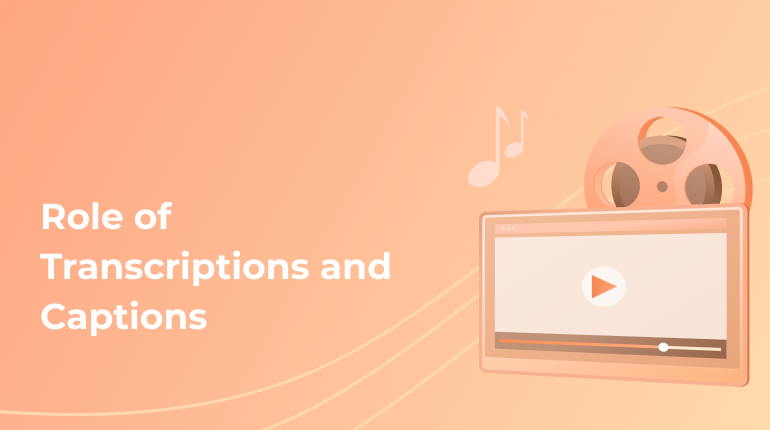Can Transcriptions And Captions Help To Learn? The Answer Is Yes!

If you are a teacher, there is no doubt that you are willing to share your knowledge with students. But if you want all students to understand the material perfectly and meet your expectations, you need something more.
Of course, you need to develop your teaching skills. All educators face challenges of various kinds, such as the traditional classroom environment. Whether it’s a small discussion group or a huge lecture hall, you need to find an individual approach to all students. Including those who learn your language as a foreign language have hearing characteristics, radically different features of the approach to learning.
The good news is, nothing is impossible. Sometimes all you need to be successful is to use the right technology. We want to share with you the main benefits of transcription, which will take learning to the next level.
What Materials Can You Transcribe for Your Students?
Fortunately, the days are gone when outdated textbooks were the only source of information.
Modern teachers and professors can use a variety of methods to effectively transfer their knowledge. For example, it can be videos and podcasts, quizzes, websites, etc. You can also record your lectures, book club meetings, and discussion groups. And if you want to give your students the most, you definitely need to think about transcribing this content. This service doesn’t require big investments of money or time — just hire a good transcription company that is able to meet your expectations.
Transcription Will Help Your Students Succeed: Find Out How
We work with thousands of educators who are constantly developing their skills and looking for new ways to impress their students. Whether you’re a traditional professor, an online school mentor, a middle school teacher, you’ll surely appreciate our transcription services. So, let us show you how exactly you and your students can benefit from them.
Students can use transcriptions for notes
You probably know that different people need different learning approaches. Transcriptions will be an excellent solution for those students who need a closer interaction with the material. For example, a student might use a transcription of your lecture to prepare for a note-taking exam. They can highlight or underline important sentences, copy keywords to find additional information, supplement lecture transcriptions with their own comments, etc.
The nice thing about transcription is that students don’t need to record the lecture as you dictate; they can just listen to it, focusing on new concepts instead of mindlessly recording as dictation. And when they want to have the material in front of their eyes, they just use the text transcription.
Students can be more focused
Have you found yourself in a situation where your students just started to lose interest during the lesson? Of course, yes, every educator knows how it is. And this is absolutely normal because even the most attentive people are faced with situations where their attention is scattered, especially if the lecture is long enough.
If you want students to be able to revisit the parts of the lecture they missed, provide them with a transcript. Now, even if they don’t remember some information right away, they will be able to fill this gap. Besides, transcription can be a real savior for those students who miss classes and have to catch up.
You can increase students’ accessibility
You probably have students with hearing impairments or deaf students in your class. Or they could be if your content was more accessible.
We are also talking about students who study English as a foreign language. Yes, they have a good command of the language, but listening comprehension can be very difficult. They definitely want a text version of the new material in order to read it at a comfortable pace, translate unfamiliar words, take notes, etc.
You can experiment with content types
Transcriptions of lectures, seminars, interviews, and other recordings give you the ability to create different types of content. What about a useful newsletter for students? Maybe you would like to create a blog? Or do you think that your students will definitely like the quizzes based on the lectures they have taken?
Just imagine how many possibilities are open to you when you have a high-quality transcription of audio or video files or subtitles for your videos. Can they improve the quality of education? They can indeed!
You can save a lot of time
All teachers pause lectures because some of the students did not hear the material. Also, all teachers write notes on the chalkboard to help students perceive information visually.
With the help of transcription, you will finally get rid of these unnecessary pauses and get more time in the classroom. Any idea how to do it? For example, you can discuss a new topic with students, answer their questions, or even do research. Of course, this will add more points to you because you will be doing exactly what the teacher should – teach.
Plus, the transcriptions will help you prepare for your next lectures. You can go back to the previous ones to find points that need improvement.
Get Professional Transcription That Will Meet Your Expectations
There are several ways that you can use to transcribe your audio or video files. For example, you can:
- do it yourself;
- use your Mac features to convert the record in the text document;
- use professional software for automated transcription;
- hire a human transcription service.
Each option has its benefits, but if you want to get the most out of transcription, you definitely should outsource it to professionals. Our transcribers know their onions, and they will surely help you with your educational goals!